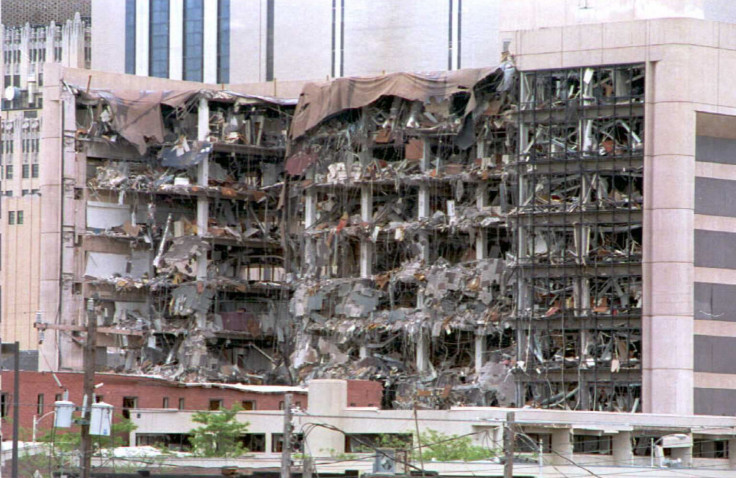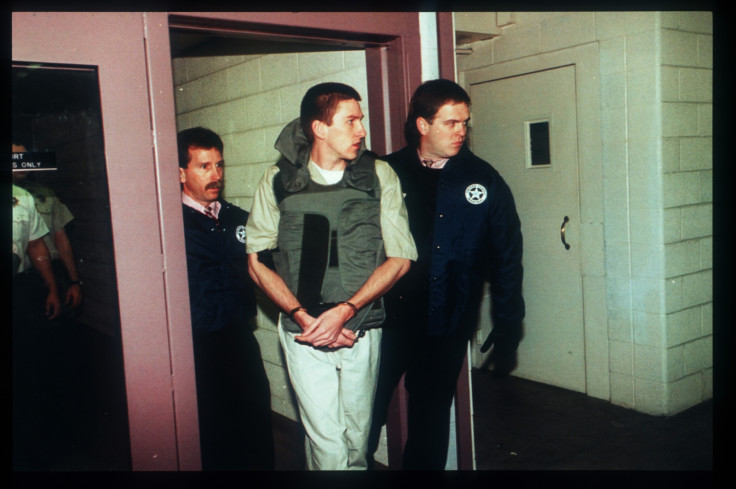Oklahoma City bombing 20th anniversary: What happened on the day of the 1995 tragedy?

Twenty years ago, on the morning of 19 April 1995, an anti-government veteran of the Gulf War named Timothy McVeigh drove a Ryder truck full of explosives into the centre of Oklahoma, killing 168 people, 19 of whom were children, and injuring more than 680 others.
The blast occurred outside the Alfred P Murrah Federal Building, destroying a third of the nine-storey block and devastating more than 300 nearby buildings. Several hundred people were left homeless and, until 11 September 2001, it was the worst terrorist attack to take place on US soil – and certainly one of the worst attacks by a home-grown assailant.
Seven years before
McVeigh met Terry Nichols, a chief conspirator in the attack, in 1988 during basic army training at Fort Benning in Georgia. Michael Fortier, a third accomplice, was McVeigh's army roommate – who shared his interests in survivalism.
Both McVeigh and Nichols had expressed anger at both the FBI's 1992 stand off with Randy Weaver at Ruby Ridge, which led to the death of his son and wife, as well as the federal government's handling of the 1993 Waco siege – a clash between the FBI and religious group the Branch Davidians, which launched a botched attempt to execute a search warrant and led to a fire fight, killing 76 men, women and children.
The siege ended on 19 April 1993; the largest massacre of Americans by their own government since 1890, when a number of Native Americans were killed at Wounded Knee, South Dakota. During the siege, McVeigh visited the Waco site in March 1993, returning once again in the aftermath. He later decided to attack a federal building, in response to the raids.
McVeigh later justified the attack, saying: "I didn't define the rules of engagement in this conflict. The rules, if not written down, are defined by the aggressor. It was brutal, no holds barred. Women and kids were killed at Wace and Ruby Ridge. You put back in the government's faces exactly what they're giving out."

On the day
McVeigh entered downtown Oklahoma at around 8.50am, having decided that morning to carry out the attack earlier than 11am, as he had originally planned. Wearing a T-shirt with the motto of the Commonwealth of Virginia, sic semper tyrannis – "thus always to tyrants" – he drove towards the Murrah Federal Building in his truck, loaded with over 2,200kg of ammonium nitrate fertiliser, nitromethane and diesel fuel mixture.
He carried several pages of The Turner Diaries, a fictional account of white supremacists who start a violent revolution to exterminate the US federal government, as well as an envelope of anti-government materials. In it was a bumper sticker with the Thomas Jefferson slogan: "When the government fears the people, there is liberty. When the people fear the government, there is tyranny." Underneath, McVeigh had written: "Maybe now, there will be liberty!"
Around one street away, McVeigh lit the five-minute fuse on the bomb and parked the truck in a drop-off zone underneath the building's day-care centre. He locked the vehicle and exited towards his getaway vehicle – dropping the keys to the truck a few streets away. At 9.02am, the truck detonated with a force of over 2,300kg of TNT – measuring 3.0 on the Richter scale. It was heard and felt up to 55 miles away.

Aftermath
The blast created a 30ft-wide, 8ft-deep crater on the street outside the building, shattering glass in 258 nearby buildings. Around 86 cars and various apartment buildings were destroyed around the site, leaving many homeless. The broken glass along from the explosion accounted for 5% of the death total and nearly two-thirds of the injuries outside the Murrah Federal Building.
An estimated 646 people were inside the building when the bomb exploded. By the end of the day, 14 adults and six children were confirmed dead, and over 100 injured. The toll eventually reached 168 dead, most of which resulted from the collapse of the building, rather than the bomb blast itself.
The victims included three pregnant women, and ranged in age from three months to 73 years. Of those killed, 99 worked for the federal government. Nineteen of the victims were children, 15 of whom had been in the America's Kids Day Care Centre when the bomb exploded. Rescue and recovery efforts ended on 5 May, by which time all but three bodies of the victims were recovered.
McVeigh was arrested within 90 minutes of the explosion as he travelled on the interstate. In 1997, was executed by lethal injection on 11 June 2001, while Nichols was sentenced to life in prison. The Oklahoma City National Memorial and Museum was erected on the site of the former Murrah Federal Building in 2001.
© Copyright IBTimes 2025. All rights reserved.




















